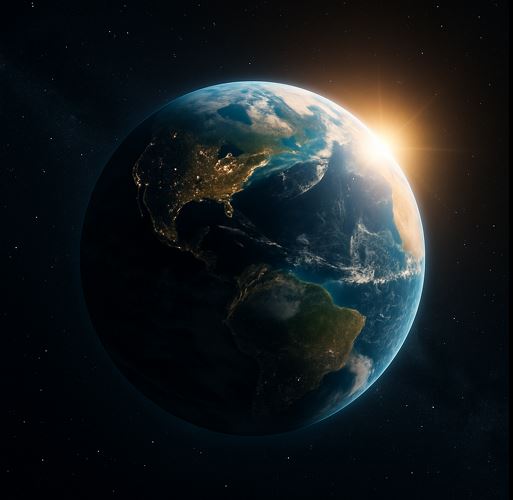Equinoxes: When Day and Night are Equal
 🌍 When Day and Night Play Fair
🌍 When Day and Night Play Fair
Twice a year, the universe decides it’s time to stop playing favorites. The Sun crosses the celestial equator, and suddenly — boom — day and night are (almost) equal everywhere on Earth. That moment is called an equinox, from the Latin aequus (“equal”) and nox (“night”). No long shadows in the north or endless sunlight in the south — just cosmic balance.
📅 When Do Equinoxes Happen?
There are two each year:
- March Equinox — around March 20–21, marking spring in the Northern Hemisphere and autumn in the Southern Hemisphere.
- September Equinox — around September 22–23, marking autumn in the Northern Hemisphere and spring in the Southern Hemisphere.
Thanks to the Earth’s orbit and 23.5° axial tilt, these dates shift slightly each year — so don’t expect them to be perfectly on the same day forever.
🔭 What’s Really Going On?
[ad] Empty ad slot (#1)!
During an equinox, the tilt of Earth’s axis is such that the Sun is directly above the equator. That means sunlight hits both hemispheres almost evenly, creating roughly the same amount of daylight and darkness.
Fun fact: It’s almost equal — atmospheric refraction bends sunlight, making days a few minutes longer.
🌱 Symbolism & Traditions
Cultures around the world have celebrated equinoxes for millennia. Here are some favorites:
- Chichen Itza, Mexico — On the March equinox, the pyramid of El Castillo creates a shadow-serpent that slithers down its staircase. Thousands gather to watch this ancient solar show.
- Japan’s Ohigan — A Buddhist tradition of visiting graves and reflecting on life’s impermanence during both equinoxes.
- Persian Nowruz — The Persian New Year begins at the March equinox, bringing house-cleaning, feasts, and jumping over bonfires (safely, hopefully).
- Mabon (Neo-Pagan) — Celebrated during the September equinox as a harvest festival, giving thanks for abundance before the dark half of the year.
🤓 Quick Science Bites
- Equinoxes are the only two days when the Sun rises due east and sets due west for everyone on Earth (excluding the poles).
- Near the equator, day length changes very little year-round — so equinoxes there are less dramatic.
- In space terms, an equinox is when Earth’s rotational axis is perpendicular to the Sun–Earth line.
🌍 Equinox Fun Facts & Ancient Traditions
- Chichen Itza, Mexico — On the March equinox, the pyramid of El Castillo casts a moving shadow that looks like a serpent slithering down its steps. Thousands come to witness this ancient solar illusion.
- Megalithic Cairns, Ireland — At Loughcrew, ancient passage tombs align with the rising Sun at the equinox, flooding their stone chambers with light.
- Japan’s Ohigan — A Buddhist week of reflection and ancestor visits during both equinoxes, rooted in the symbolic balance between light and dark.
- Persian Nowruz — The Persian New Year, starting exactly at the March equinox, with rituals of renewal, festive meals, and the famous “haft-seen” table.
- “Equal Night” — The name equinox comes from Latin aequus (“equal”) and nox (“night”) — though thanks to atmospheric refraction, days are still a tiny bit longer.
✨ Whether you see it as a time for balance, renewal, or just an excuse to post a pretty sunset pic, equinoxes are the universe’s twice-yearly reminder: everything tilts, everything shifts, but balance always returns.
[ad] Empty ad slot (#1)!